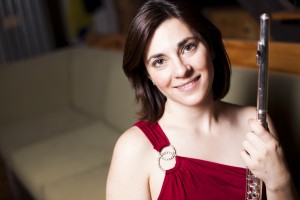Music with electronic roots by Nic Collins, Kyong Mee Choi, Christopher Biggs, Timothy Ernest Johnson, Elizabeth Start, Francisco Castillo Trigueros, Timothy Dwight Edwards
Program VI in our series Live Digital Performances
Buy tickets for function:object online or at the door. $15 or $5 for students and seniors.
Nicolas Collins
Bracken (after Christian Wolff) (2014) For five or more people with computer direction
with members of Articular Facet
Bracken adapts the language of circuits and software for interpretation by any instrument. A computer generates and projects a live streaming score that directs the players to interact with one another following rules derived from binary logic and various methods of analog and digital signal processing. These instructions are represented by 17 shorthand symbols:& only play when one or more other players are playing (AND = ensemble)
xor only play when no-one else is playing (Exclusive OR = solo)
} start immediately after another player ends (triggered)
{ stop as soon as another player starts (ducked)
| play in synch with other player(s) (gated)
= play as similarly as possible to another player (mimic)
? play as differently as possible from the other player(s)
::: sparse, isolated sounds (or progressively thin out an ongoing texture)
? fill the entire time interval with continuous soun
< crescendo over entire time bracket
> decrescendo over entire time bracket
~ a clearly pitched sound
* a noise or a distorted sound
@ change location of sound in space (walk around, pan sound in PA)
± change of pitch, detuning, vibrato
loop repeat a phrase/sample regularly (can reverse direction)
eq change timbre/equalization/filtering one or more times
 The computer randomly shuffles through this symbol set, projecting five at a time onto a screen that can be seen by the players (and probably the audience as well). A time bracket is displayed under each symbol, indicating the seconds remaining during which the symbol can be articulated; at the end of this interval a new symbol is chosen. Each player can perform any of the displayed symbols, in any order, at any time within the available time bracket, whenever the necessary conditions are met, i.e.: following immediately after another sound ({); playing in synch with another player (|); playing only when no-one else is playing (xor).
The instrumentation of Bracken is open (a minimum of five players must be present). The score does not specify absolute or relative pitch, so this work can be played by non-traditional instruments, such as electronic circuits or contactmiked household objects, as long as they are “performable” enough to satisfy the requirements of the notated interactions.
This notation owes a great debt to Christian Wolff’s “co-ordination” scores of the early 1960s, whose techniques presaged key traits of subsequent electronic and computer music.
The computer randomly shuffles through this symbol set, projecting five at a time onto a screen that can be seen by the players (and probably the audience as well). A time bracket is displayed under each symbol, indicating the seconds remaining during which the symbol can be articulated; at the end of this interval a new symbol is chosen. Each player can perform any of the displayed symbols, in any order, at any time within the available time bracket, whenever the necessary conditions are met, i.e.: following immediately after another sound ({); playing in synch with another player (|); playing only when no-one else is playing (xor).
The instrumentation of Bracken is open (a minimum of five players must be present). The score does not specify absolute or relative pitch, so this work can be played by non-traditional instruments, such as electronic circuits or contactmiked household objects, as long as they are “performable” enough to satisfy the requirements of the notated interactions.
This notation owes a great debt to Christian Wolff’s “co-ordination” scores of the early 1960s, whose techniques presaged key traits of subsequent electronic and computer music.
Francisco Castillo Trigueros
Sur le débris for bass flute and electronics
with Shanna Gutierrez, bass flute
Behind the fractured, percussive lines played by the bass flute in Sur les debris, lay the remains of the shattered recording of a reading of a poem by Arthur Rimbaud. The recording is barely perceptible, the source never recognizable. However the shattered recording is essential in the understanding of the piece, as it served the role of a seed from which the rhythmic and timbral materials germinated. The resulting music is brittle and discontinuous: surfaces that lie at the border between rhythm and texture, splintered pedals that are sparked and interrupted by violent gestures, silences and pauses that disrupt the linearity of the piece. October 24, 8pm Sherman Avenue Theater 1702 Sherman Avenue, Evanston $15/$5